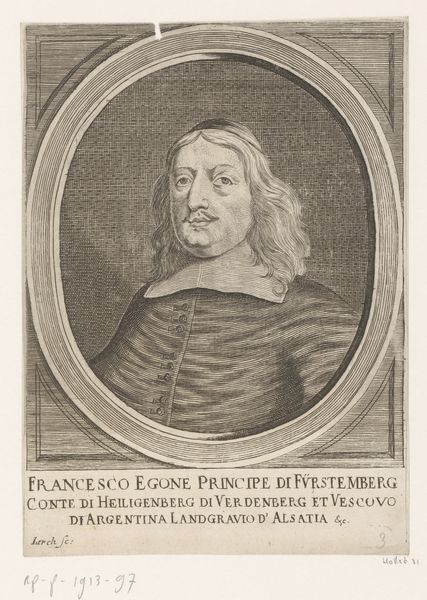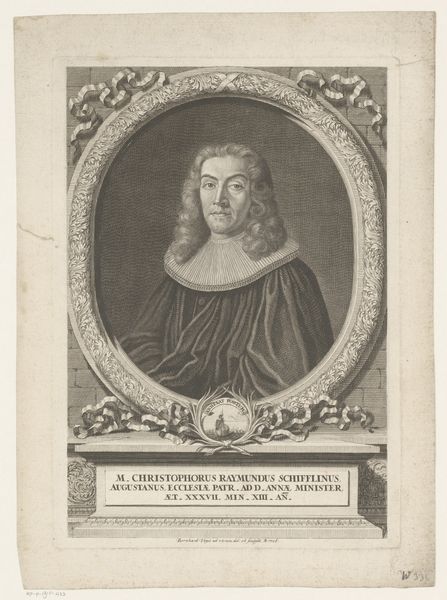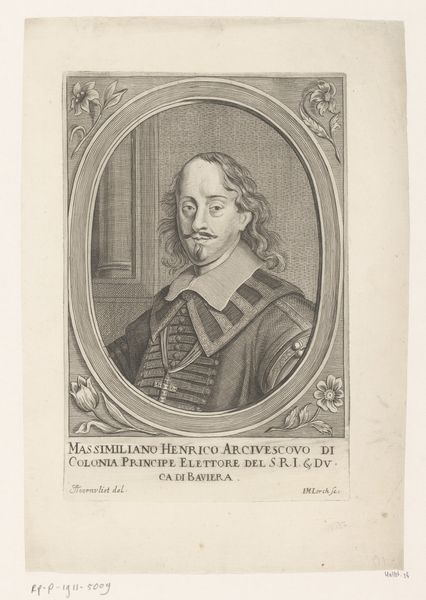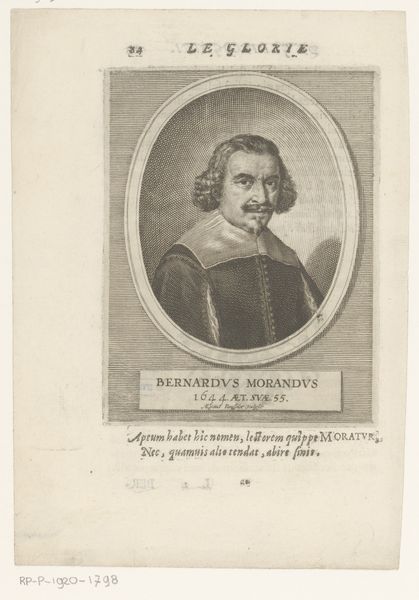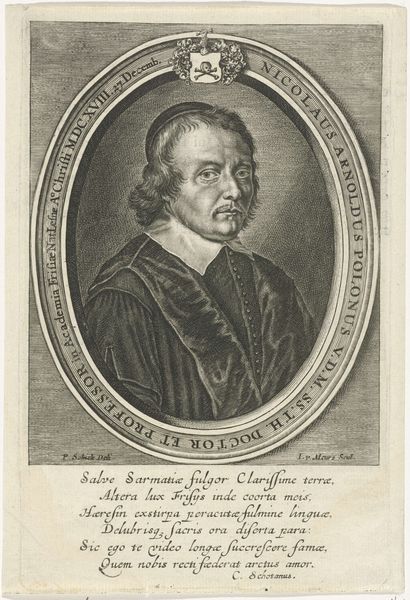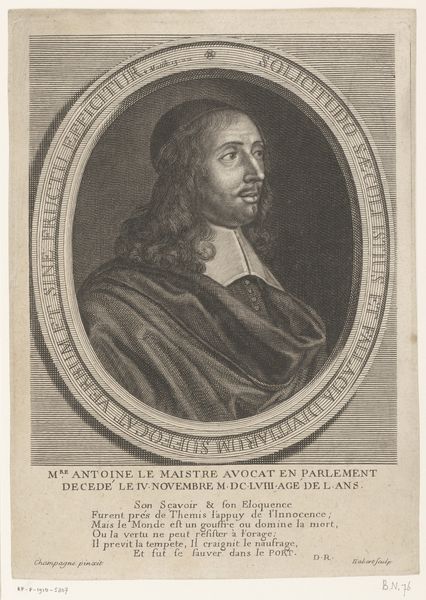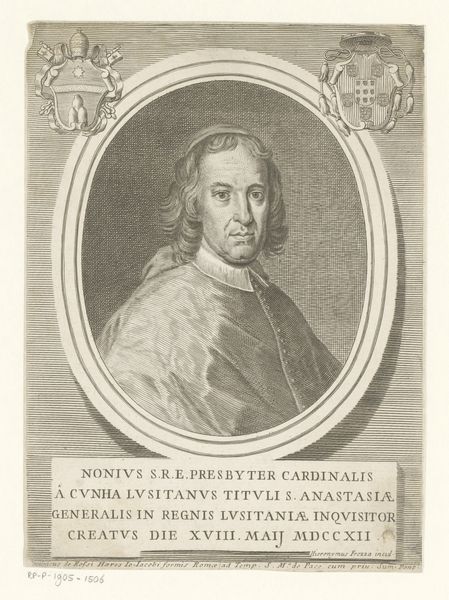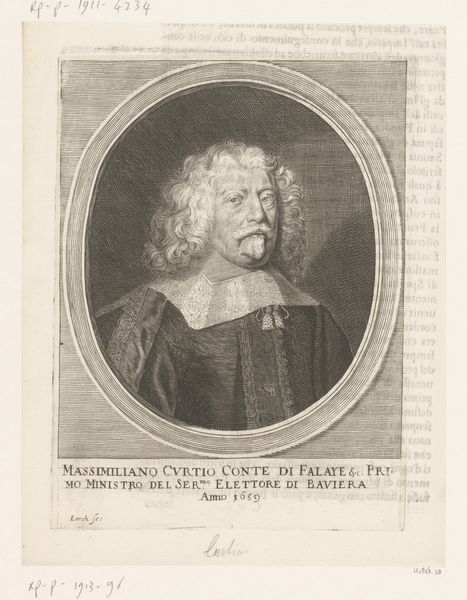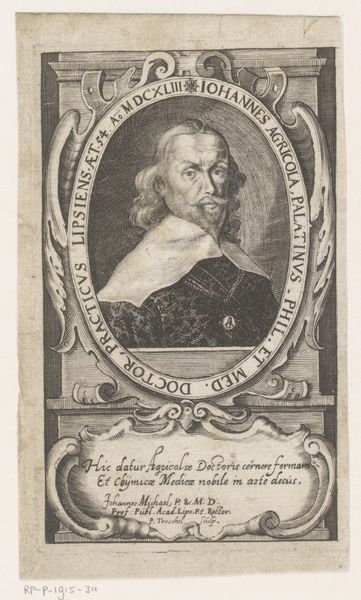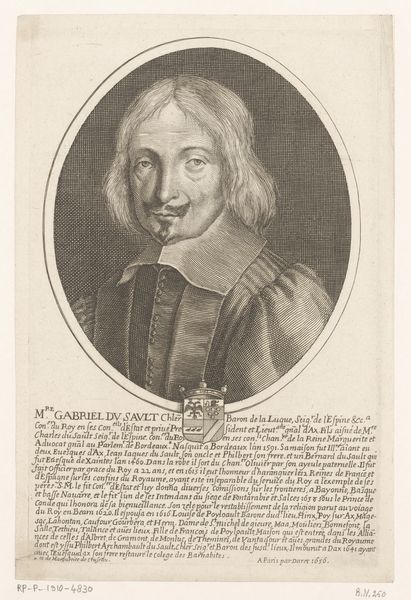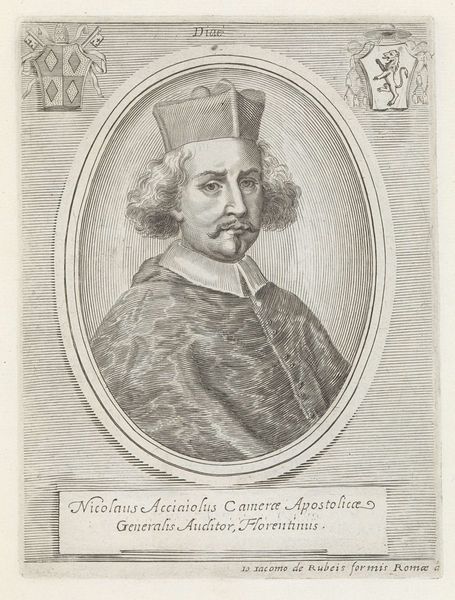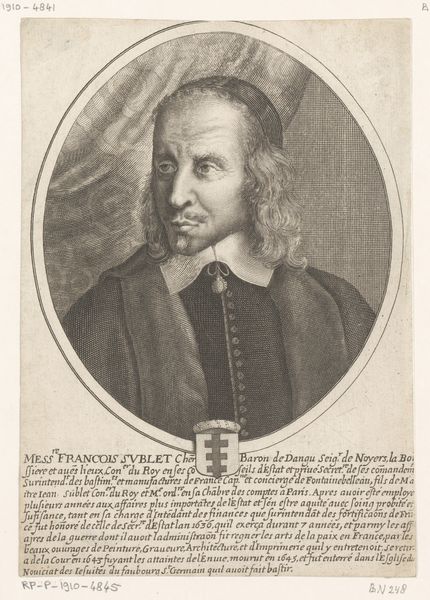
print, engraving
#
portrait
#
baroque
# print
#
history-painting
#
engraving
Dimensions: height 242 mm, width 155 mm
Copyright: Rijks Museum: Open Domain
Johann Martin Lerch made this portrait of Antonio Barberini using engraving, a printmaking technique, sometime in the late 17th century. Engraving involves meticulously cutting lines into a metal plate, usually copper, with a tool called a burin. The incised lines hold ink, and when the plate is pressed against paper, the image is transferred. The sharpness of the lines and the fineness of the detail give the portrait its crisp appearance. Look closely, and you will see the complex textures achieved through hatching and cross-hatching, especially evident in the Cardinal's robes and facial features. Engraving was not just a means of artistic expression, but also a method of mass production and distribution of imagery, tied to the rise of print culture and early capitalism. The amount of labor involved is immense. Considering the skill and time required, it’s important to recognize printmaking as a highly skilled craft, blurring the lines between fine art and commercial production.
Comments
No comments
Be the first to comment and join the conversation on the ultimate creative platform.

